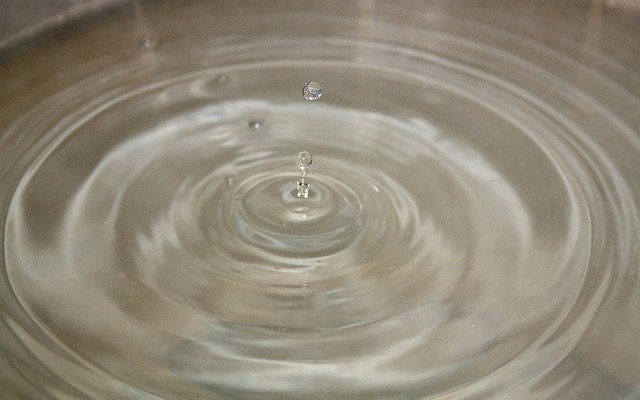 Image courtesy of [Kaushik Narasimhan via Flickr]
Image courtesy of [Kaushik Narasimhan via Flickr]
Energy and Environment
The Challenges of Water Management and Consumption
Hammers swinging and chisels carving, the great arched stone structure rises from the ground. It is 54 AD, and the Aqua Claudia is nearing completion. One of many aqueducts in central Italy, this structure would provide clean and running water to the city of Rome. In the centuries to follow, Rome’s health, trade, and population would boom, propelling it to the pinnacle of greatness in the ancient world. Water has always been vital to the prosperity of human civilizations. As the world globalizes and markets become integrated, we continue to face challenges with regard to water in 2015. Scarcity, abundance, economic forces, and technology all play concerning roles in our need to more effectively manage our water, vital to not only our prosperity but our survival.

An ancient Roman aqueduct. Courtesy of Wolfgang Staudt via Flickr.
Some arguments suggest that scarcity of a resource is paradoxically beneficial, as it pushes people to band together and cooperate in an attempt to secure their needs, ration what they have, and communicate. However, this is overly optimistic; scarcity is tied to violence. While in the modern era this does not necessarily involve resource wars–as in countries fighting each other over access–it often involves internal struggles and alienation of groups. For example, powerful people gain more power by governing access to a scarce resource. In this sense, the issue is largely one of distribution. This is one of the primary concerns with any resource in global politics; whether regarding countries in the developed world in relation to those in the underdeveloped world, or rich and powerful people in relation to the poor and marginalized ones within the same country, some groups enjoy lavish abundance while others go wanting. There remains plenty of water to go around, it is just a matter of who gets it and how.
Another reason why distribution is a challenge is because of poor infrastructure and economic vectors. Already facing energy shortages and blackouts, officials in Pakistan predict a water crisis on top of what will arrive soon. A significant cause of these concerns is mismanagement; thus poor distribution methods and insufficient economic structures disallow the huge population from receiving the water it needs. Of course there are also climate change-related factors involved, but a properly organized system would be able to account for these dynamics to some degree, as well.
Pakistan’s Water and Energy Minister, Khawaja Muhammed Asif, is of the opinion that the country’s resource challenges are largely due to internal behaviors, stating, “There is a national habit of extravagance.” This means that some people are using a huge amount of water unnecessarily, while others are thirsty. Furthermore, New York Times writer Salman Masood points out that water politics have been tied into jihadist activities; Islamist militants regularly accuse India of denying Pakistan its rightful water, and the leader of the 2008 train attacks in Mumbai often cites these perceived dynamics as one of his primary grievances. However, Masood continues, India’s water storage infrastructure is leaps and bounds superior to that of Pakistan, containing over three times the capacity to save it for a not-rainy day.

The Indus River, lifeblood of villages and civilizations. Courtesy of indiawaterportal.org via Flickr.
There exist many proposals regarding what to do about water shortages and accessibility. One such idea involves towing icebergs to locations in need, but this is highly impractical. In addition to the high costs of such an operation, large amounts of the iceberg would melt in transit, and this delivery system does not address the endemic structural deficiencies.
Another idea involves desalinization plants. These draw on the enormous quantities from the oceans, as otherwise only three percent of the Earth’s water is fresh. This process has some benefits, drawing from the seemingly endless supply, but it is also very expensive to put into play and operate. Furthermore, it is often not wisely appropriated. There has recently been a debate over whether to build a desalinization plant in New York’s Rockland County. The primary motive for resistance is that there is simply no need. In addition to the fact that the region receives a high amount of rainfall, water consumption has actually been dropping as water-using technologies such as washing machines and toilets have become more efficient. Constructing the plant would cost $150 million unnecessarily. Furthermore, it would desalinize the briny water from the lower Hudson River, where it meets the ocean, which could be potentially damaging to the estuary life. Most desalinization plants draw directly from the sea.

A desalinization plant in Spain. Courtesy of James Grellier via Wikipedia.
This debate is a product not of scarcity but of abundance; there is plenty of water to go around so the desalinization plant is unnecessary. But economic structures and finances abound, so additional challenges arise. In most parts of the United States, water is so abundant and the physical infrastructure and economic style for delivering it is so effective that water is often wasted. It is so inexpensive that there is little incentive to conserve. But the problem goes far beyond household consumption. Over three quarters of all water use in the United States occurs in the agricultural industry. Flooding fields, using enormous sprinklers for hours at a time, and other inefficient means of irrigation and watering abound because there is so much water and no consequences for using it all.
It is somewhat ironic, then, that on a national scale we care so little about using our water but are very aware of its purity, content, and condition. Several weeks ago, some oil from a spill was found in the Yellowstone River. This serves as drinking water for many people, as well as plays a vital role in the delicate ecosystem of the region. The spill came from a burst pipeline, fueling further concerns about the safety of this delivery system. Just recently, President Obama exercised his veto power for the first time in five years by striking down the necessary legislation to make the controversial Keystone XL Pipeline a reality.
Whether there is not enough water and methods of procuring it must be hammered out, or there is an abundance and measures to regulate and protect it must be put into place, effectively handling water is the key not only to prosperity, but to survival.








Comments